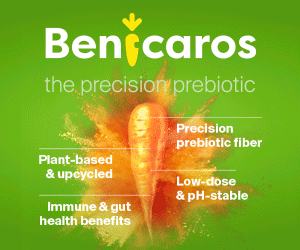The latest news, trends, analysis, interviews and podcasts from the global food and beverage industry
As the food industry grapples with rising labour costs and a persistent workforce shortage, the concept of robotisation is increasingly capturing the attention of food producers.
A recent survey conducted by RaboResearch among over 20 mid-sized Dutch food manufacturers reveals a significant shift in attitudes toward automation technologies, highlighting the urgent need for innovation in production processes.
Addressing workforce shortages
Historically, the food sector has been slow to adopt robotic solutions due to its unique challenges, including low profit margins, high-volume demands and often harsh production environments.
However, as the costs of robotic technologies decline and their capabilities expand, food processors are beginning to view automation as a viable strategy to address ongoing labour shortages.
The primary motivation for investing in robotics, as identified by the surveyed producers, is to mitigate personnel shortages. With an ageing workforce and a lack of skilled labour, many companies are looking to robots to enhance productivity, retain existing employees and support less-skilled staff.
Other key drivers include reducing production costs through improved utilisation rates, enhancing output consistency and expanding product offerings without compromising economies of scale.
Reasons to invest in robotisation

Source: RaboResearch 2024
Challenges to integration
The survey results indicate that food producers are particularly interested in automating tasks that require substantial human involvement, such as raw material handling, internal logistics and packaging.
New-generation robots, including automated guided vehicles (AGVs) and collaborative robots (cobots), are designed to work alongside human workers, broadening the scope of potential applications on factory floors.
However, despite the promise of robotisation, food manufacturers face several hurdles. Adjusting existing production processes to integrate robotics poses a significant challenge, especially given the high initial investment required.
To achieve cost-effectiveness, producers must ensure minimal production volumes, which could limit flexibility in product offerings and responsiveness to market demands.
The typical payback period for investments in automation is three to five years, with strategic projects potentially extending this timeframe. This financial consideration is compounded by concerns about the alignment of capital outlay with the duration of supply contracts, particularly with food retailers.
Industry experts suggest that longer-term commitments from clients and potential government subsidies for innovation could alleviate some of these financial anxieties.

Skill sets and space constraints
Additionally, the skill set required to operate advanced robotic systems presents another barrier. While general production labour is in short supply, finding digitally proficient personnel remains a challenge.
Space constraints in older facilities also complicate the deployment of robotic technologies, making the timing of new construction plans critical for successful integration.
Interestingly, the survey indicates that food producers are not solely focused on using robots for primary production tasks. There is potential for automation in safety inspections and cleaning operations, which could enhance employee satisfaction and improve the overall work environment.
By alleviating some of the more labour-intensive tasks, producers may boost their appeal to current and prospective employees.
Future outlook for robotisation
As the labour market continues to tighten, the momentum behind robotisation in the food sector is expected to grow. Food processors are likely to explore deeper automation solutions that not only bolster production resilience but also enhance agility in meeting evolving customer demands.
The current labour crisis, coupled with advancements in robotic technology, is prompting producers to reconsider their automation strategies. Its successful integration could reshape the future of food manufacturing, leading to a more efficient and adaptable industry.
#robotics #labour #automation #technology













.jpg)